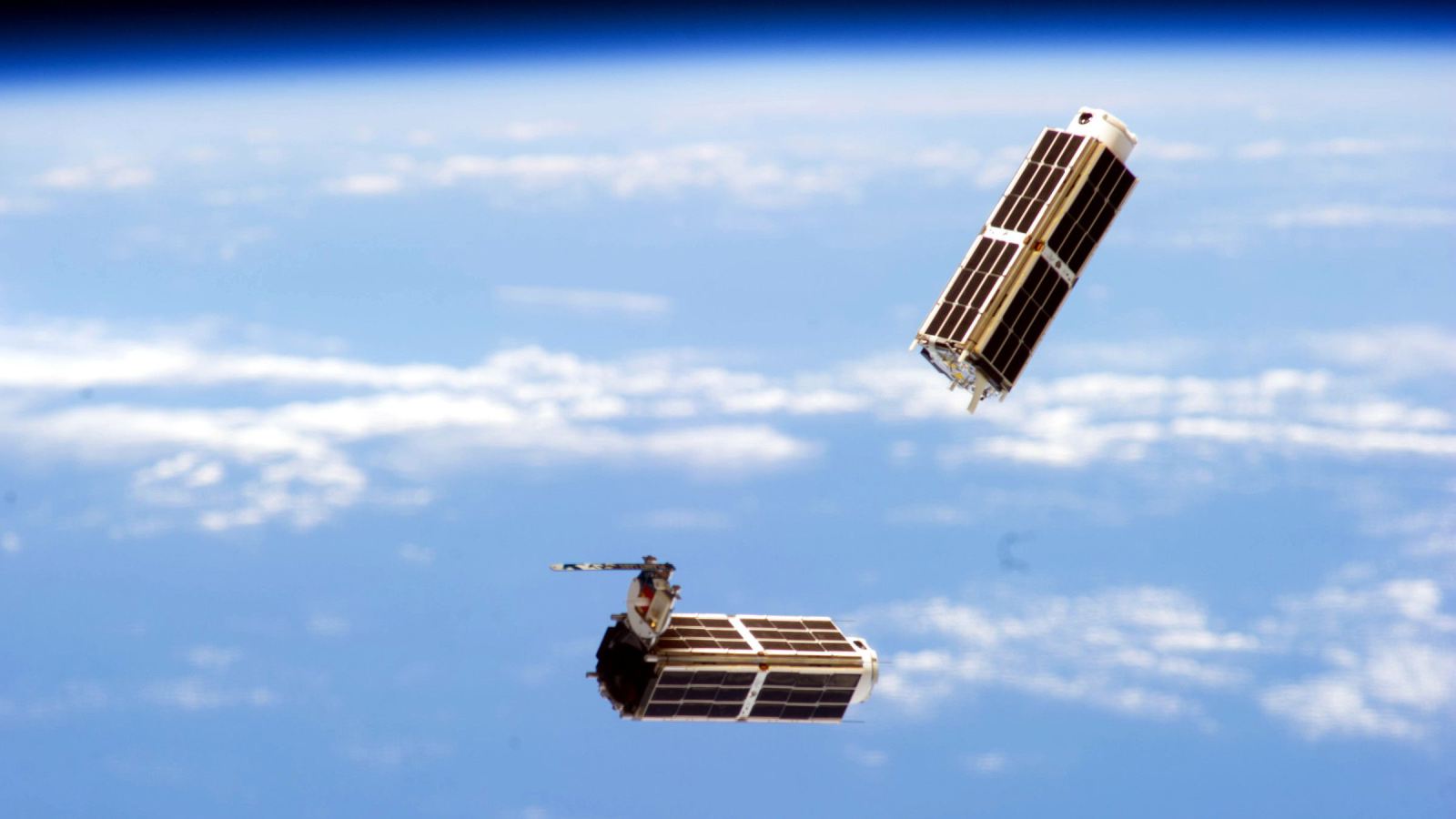
Nanosatellites, also known as CubeSats, are revolutionizing the way we explore and understand the universe. These tiny spacecraft, measuring just a few centimeters along each side, have opened up new possibilities in space research, communication, and observation.
In this article, we will delve into the fascinating world of nanosatellites and discover 11 surprising facts about these small but mighty space probes. From their origin and design to their diverse applications and achievements, nanosatellites have become a game-changer in the field of space exploration.
So, fasten your seatbelts and get ready to take a journey into the intriguing world of nanosatellites!
Key Takeaways:
- Nanosatellites are small, affordable, and versatile, revolutionizing space exploration and enabling global connectivity, climate monitoring, disaster management, and space education.
- Nanosatellites are like tiny space superheroes, helping scientists study climate change, aiding in disaster response, and opening up new possibilities for space research and future missions.
Nanosatellites are golf ball-sized satellites.
If you thought satellites were large and bulky, think again! Nanosatellites, also known as CubeSats, are miniaturized satellites that can fit in the palm of your hand. With dimensions roughly equivalent to that of a golf ball, these tiny spacecraft have revolutionized space exploration.
Nanosatellites are cost-effective.
One of the most remarkable aspects of nanosatellites is their affordability. Traditional satellites can cost hundreds of millions of dollars to build and launch, whereas nanosatellites can be developed at a fraction of the cost. This cost-effectiveness has opened up new opportunities for research, educational institutions, and even small startups to venture into space.
Nanosatellites have diverse applications.
Don’t let their small size fool you – nanosatellites pack a punch when it comes to their capabilities. They are used for a wide range of applications such as Earth observation, communication systems, scientific experiments, technology demonstrations, and even space exploration missions. Their versatility makes them a valuable asset in various industries.
Nanosatellites are launched in clusters.
In order to maximize efficiency and reduce launch costs, nanosatellites are often deployed in clusters. Multiple CubeSats are packed together in a deployer and launched into space together. This cluster-based approach allows for simultaneous deployment and cooperation between satellites.
Nanosatellites enable global connectivity.
With the advent of nanosatellites, the dream of worldwide connectivity is becoming a reality. These small satellites play a crucial role in providing internet access to remote and underserved areas, bridging the digital divide and enabling communication on a global scale.
Nanosatellites can be assembled easily.
Building a nanosatellite is like solving a complex puzzle with standardized building blocks. These miniaturized satellites are typically made up of standardized CubeSat units that can be easily assembled and integrated. This standardized approach streamlines the development process and reduces lead time.
Nanosatellites are helping to monitor climate change.
Climate change is a pressing global issue, and nanosatellites are playing a significant role in monitoring and understanding its impact. They provide valuable data on weather patterns, greenhouse gas emissions, ocean temperatures, and other environmental factors, aiding scientists in their quest to tackle climate change.
Nanosatellites assist in disaster management.
In times of natural disasters, nanosatellites offer invaluable support in disaster management efforts. They can quickly gather data on affected areas, assess damage, and provide real-time information to aid in disaster response and recovery operations.
Nanosatellites are used for space education.
Nanosatellites have opened up new avenues for space education and hands-on learning. Educational institutions around the world are incorporating nanosatellite projects into their curriculum, allowing students to gain practical experience in satellite design, mission planning, and data analysis.
Nanosatellites are advancing space research.
With their affordability and accessibility, nanosatellites have democratized space research. Scientists and researchers can now conduct experiments, collect data, and test theories in space without the need for large budgets or extensive resources. This has accelerated advancements in various fields of study.
Nanosatellites are paving the way for future space missions.
The technological advancements and achievements of nanosatellites are pushing the boundaries of space exploration. They are serving as precursors and testbeds for more complex and sophisticated missions, opening up possibilities for interplanetary travel, asteroid mining, and even colonization of other celestial bodies.
Conclusion
In conclusion, nanosatellites have revolutionized the world of space exploration and communication. These miniature satellites offer numerous advantages, including cost-effectiveness, flexibility, and quick deployment. With their compact size and advanced technology, nanosatellites have proven to be a game-changer in various industries, from scientific research to remote sensing and beyond.
As the demand for small satellites continues to grow, we can expect to see even more remarkable advancements in nanosatellite technology. With ongoing innovation and development, these tiny satellites will play a crucial role in shaping the future of space exploration and communication.
FAQs
1. What are nanosatellites?
Nanosatellites are small, lightweight satellites that are typically around the size of a shoebox. They are designed to be low-cost and easily launched into space for a variety of purposes, such as scientific research, communication, and remote sensing.
2. How are nanosatellites different from traditional satellites?
Unlike traditional satellites, nanosatellites are much smaller in size and have a lower mass. They are also more cost-effective and can be launched in clusters, allowing for greater coverage and flexibility in space missions.
3. What are some applications of nanosatellites?
Nanosatellites have a wide range of applications, including earth observation, climate monitoring, communication, and technology demonstration. They can be used to gather data for scientific research, monitor weather patterns, improve telecommunications, and even enable high-speed internet connectivity in remote areas.
4. How do nanosatellites communicate with Earth?
Nanosatellites use various communication systems, such as radio transmitters and receivers, to establish a link with ground stations on Earth. These ground stations receive and transmit signals to and from the nanosatellites, allowing for data collection, command execution, and information retrieval.
5. Are nanosatellites reusable?
Most nanosatellites are not designed to be reusable due to their small size and limited lifespan. However, some companies and organizations are exploring the concept of reusable nanosatellites to further reduce costs and increase the sustainability of space missions.
Nanosatellites are revolutionizing space technology, but there's so much more to explore! Dive into the thrilling world of space exploration and uncover eight extraordinary facts that will leave you in awe. Discover how satellite communication works by learning 11 fascinating facts about radio waves. And if you're curious about how space technology impacts our daily lives, check out 13 mind-blowing facts about space technology transfer. Get ready to expand your knowledge and be amazed by the wonders of the universe!
Was this page helpful?
Our commitment to delivering trustworthy and engaging content is at the heart of what we do. Each fact on our site is contributed by real users like you, bringing a wealth of diverse insights and information. To ensure the highest standards of accuracy and reliability, our dedicated editors meticulously review each submission. This process guarantees that the facts we share are not only fascinating but also credible. Trust in our commitment to quality and authenticity as you explore and learn with us.


